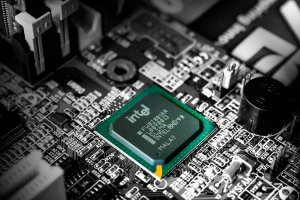Intel Faces Unprecedented Market Pressures
Intel, once the undisputed leader in the semiconductor industry, is grappling with intensifying competition and market challenges in 2025. For the first time, rival AMD has surpassed Intel in data-center chip revenue, marking a significant shift in the landscape. Simultaneously, Nvidia continues to dominate the high-performance GPU market, bolstered by the increasing demand for AI and machine learning applications.
One of Intel’s key challenges lies in the rise of ARM-based processors. Tech giants like Amazon, Google, and Microsoft are increasingly adopting these chips for their cloud infrastructures, further eroding Intel’s dominance. ARM-based chips, known for their energy efficiency and performance, have gained a foothold in data centers and are expanding into other markets.
Intel’s attempts to regain its competitive edge have included massive investments in manufacturing capacity and next-generation technologies. The company’s IDM 2.0 strategy, aimed at enhancing its chip production capabilities, has shown promise but has yet to deliver the desired turnaround. Moreover, Intel’s delayed rollout of advanced 3nm chips has left it trailing competitors in technological innovation.
Industry analysts believe that Intel may need to consider a more radical restructuring to address its ongoing issues. This could include divesting non-core assets, accelerating partnerships with foundries, and doubling down on AI and cloud-focused technologies.
Despite these challenges, Intel’s extensive market presence and brand recognition remain key assets. The company is also betting on emerging opportunities in quantum computing and autonomous vehicles to secure its future. However, with its competitors gaining ground and market dynamics shifting rapidly, Intel faces a pivotal moment. Its ability to adapt and innovate in the coming years will determine whether it can reclaim its position as a leader in the semiconductor industry.

